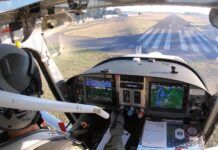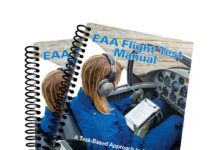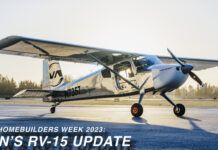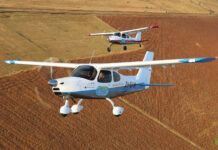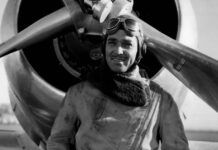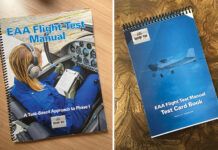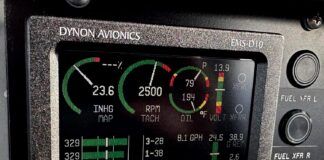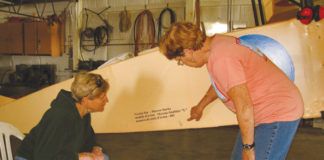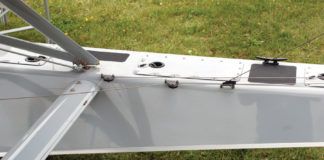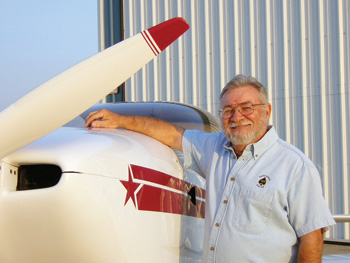
Question: Im getting ready to call for an airworthiness inspection. I know of a DAR who is very familiar with my particular design, but he is in another state. Can I hire a DAR outside of my general area?
Answer: Absolutely. Even though each DAR is assigned the same area of coverage as his FSDO, there is nothing in the regulations that prohibits him from performing inspections outside of his area. Almost half of my inspections take place outside of my designated area. Of course, this action must be approved by my FSDO and coordinated with the geographically responsible FSDO. The process goes something like this.
After being contacted by the applicant, the DAR fills out a geographic expansion form 8130-13 and forwards it to his reporting FSDO. That FSDO then forwards the form to the geographically responsible FSDO where the inspection will take place to make sure they don’t have any objections. The only reason they can refuse is if for some reason they want to perform the inspection themselves.
Another reason for having the geographically responsible FSDO involved is that the Phase I test area will be within their jurisdiction, and they need to be aware of this. The local FSDO may want to talk with the applicant to make sure he is aware of any special airspace issues in the area.
Once the form has been signed and returned to the DAR, the only remaining requirement is for the DAR to notify the geographically responsible FSDO of the inspection date and time. This will allow a local inspector to come out and observe if so desired.
The only negative aspect as far as the applicant is concerned is that he/she will likely have to pay extra travel expenses for the DAR. But this is offset by getting an inspector who is familiar with your aircraft design and has the expertise to provide you with a quality inspection.
Question: My original operating limitations restrict the airplane to daytime VFR. How can I get my operating limitations upgraded to allow night and/or IFR operations?
Answer: There are a couple of possible ways to do this. Up until last year only the FAA (not DARs) could amend operating limitations. Early in 2008, there was a change that allows some DARs to amend them. The catch is, the DAR must have function code 33 on his letter of authority. Therefore not all DARs may amend.
Looking at your situation more closely, it appears that your operating limitations were issued in 1988 and that you are not the original builder. There have been quite a few changes since then. Some inspectors may be willing to simply amend your operating limitations to the latest edition and that is certainly legal. However, because your aircraft and operating limitations are more than 20 years old, most inspectors would want to see the aircraft before issuing new operating limitations. My recommendation would be to apply for a recurrent airworthiness certificate. Because a recurrent airworthiness inspection does not constitute a condition inspection, this would require that the aircraft have a current condition inspection signed off by an A&P mechanic or the original builder, if he holds the repairman certificate for this aircraft. In this case the DAR would not have to have function code 33 to do the inspection.
The new operating limitations will not state that the aircraft is certified for night and/or IFR. They will simply stipulate that for night and/or IFR operations, the aircraft and installed equipment must comply with FAR 91.205.
Question: What happens if my aircraft doesn’t pass the DARs inspection?
Answer: Ive been doing these inspections for more than 11 years and have yet to find the perfect aircraft. It is very easy for a builder to overlook some things when he is so close to a project.
During the inspection the DAR will make a list of discrepancies. In most cases he will point them out as he goes along and have you make your own list. By doing it this way, the best method to correct each individual problem can be discussed. Usually discrepancies are minor, such as missing labels, loose jam nuts, missing cotter pins, etc.
Most often the inspector will allow you to correct any problems while he continues the inspection or immediately thereafter. The DAR will then compare his list with yours to make sure that nothing has been missed. If the issues cannot be resolved at that time, the inspector will leave the discrepancy list with you and advise you to reschedule another inspection after the corrections have been completed. At this point, your aircraft hasnt failed, it simply hasnt passed.
Now if you disagree with the inspector about anything or refuse to correct a problem that was found, the DAR must deny the airworthiness certificate. In this case, he will issue a letter of denial. This letter will be sent to you, and a copy will go to the FAA in Oklahoma City. Notice of the denial will immediately go out by FAA email to every inspector in the U.S. If you wish to call another DAR, and that is your right, just remember his first duty after being contacted is to check with Oklahoma City to see if a letter of denial has been recorded. So its not like you’re going to hide the problem from someone else. Its also good to point out here that even if your airworthiness certificate is denied, you are still obligated to pay the DAR. He is paid to perform the inspection, not to sign off the aircraft.
In over 11 years, Ive had only one individual argue with me about a problem. This was unquestionably a safety of flight issue. After he refused to correct the discrepancy, said he was not going to pay, and told me he was going to call someone else, I explained how the system works. At that point, he changed his tone and agreed to fix the problem and pay for my services.
Please send your questions for DAR Asberry to [email protected] with Ask the DAR in the subject line.


